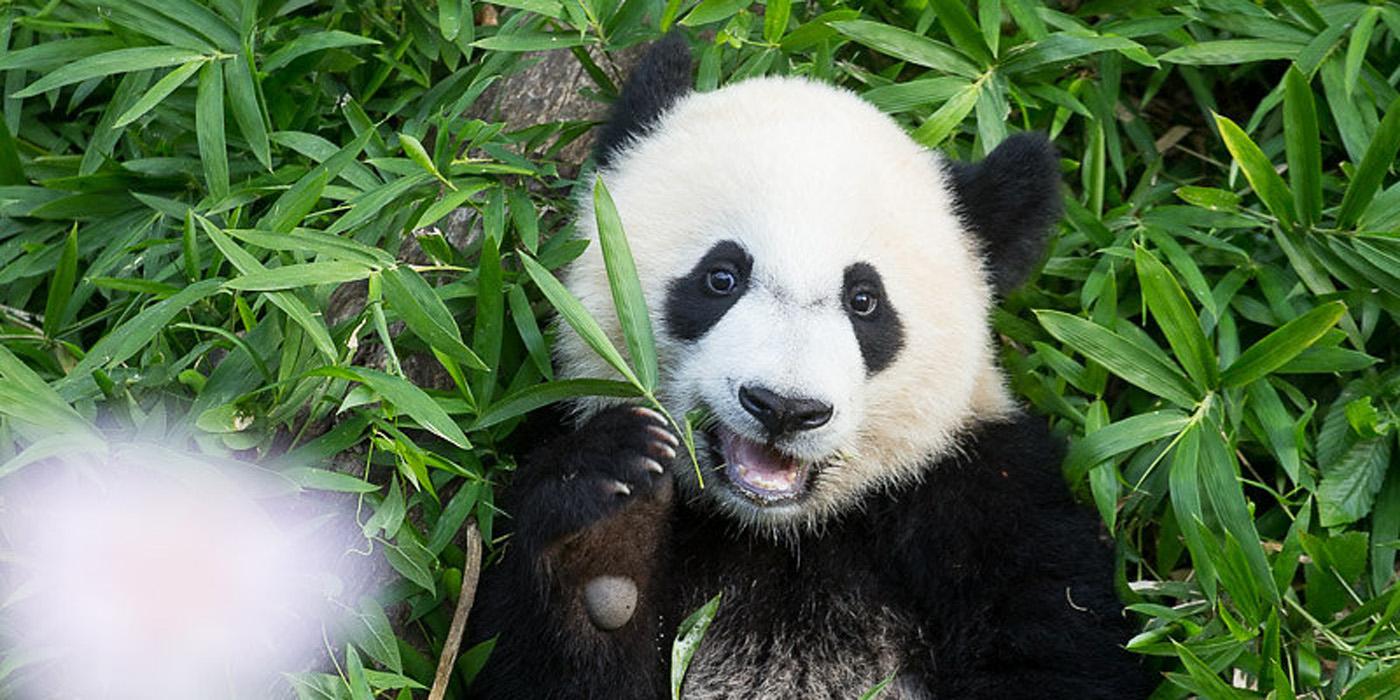Giant Panda Status Upgraded from "Endangered" to "Vulnerable"
Over Labor Day weekend, the International Union for Conservation of Nature (IUCN) released excellent news about its Red List of Threatened Species. It upgraded the giant panda from "endangered" to "vulnerable." The latest giant panda census counted more than 1,800 in the wild -- nearly double the estimated number in the 1980s.
This change in the giant panda's status is exciting and encouraging news for conservationists! It shows that our ongoing efforts in China to protect giant pandas and their habitat are effective. IUCN noted when it announced giant pandas' new status that it is critical that forest protection measures continue and emerging threats, like disease, are addressed. The news is especially gratifying for our scientists at the Smithsonian's National Zoo and Conservation Biology Institute who have been collaborating with Chinese colleagues to study giant panda reproduction, health and ecology for decades.
Help support our giant panda conservation program! With your support, we will continue studying giant pandas here at the Zoo and overseas in their natural habitat. We're making a difference and together, we can save species.
When is a Forest Not a Forest?
This panda update was written by Bill McShea, a research ecologist at the Smithsonian Conservation Biology Institute (SCBI). Each year SCBI scientists travel to China. Last spring Dr. McShea returned to an area of China he has visited several times and documented his trip.
This past April, I returned to the northern Sichuan Province of China's Pingwu County, which is home to more giant pandas than any other county in China and has five nature reserves dedicated to their conservation. Having worked and trained in Pingwu County's reserves, I was able to see old friends at all the reserves I visited. I was accompanied by two past graduate students, Li Sheng, assistant professor at Peking University, and his wife, Shen Xiaoli, a researcher for the Chinese Academy of Botany, as well as some of their new graduate students. Together, we were looking to set up a research project that could serve as their students' dissertations. Our idea was to look between the reserves in Pingwu County to see if the human landscape can support giant pandas either moving between the reserves, using corridors, or the expansion of the bears' territory into previously occupied forests.
This is not the rice country of China -- the land is too steep and the weather too cold. In Pingwu County, people plant small plots of corn, turnips, or cabbage, and recent government efforts encourage them to replace their crops on steep slopes with trees. These tree plantings offer hope for restoring panda corridors or habitats. The local people plant two types of trees, both exotic to the area. One is the magnolia tree, which has bark with medicinal value and can be harvested on an eight to 10-year cycle. The other type is the fir, which makes good housing timber. Whole hillsides that were assorted crops are now tree farms with interspersed cabbage or rapeseed plots.
We have lots of questions about these newly forested areas. Do these new forests work for wildlife? Can they be used by the animals usually found in native stands (or groups) of mixed tree species? And how does the land tenure (ownership and permissions) influence what is done with the land and how it is treated? These issues deal with peoples' livelihoods, attitudes toward wildlife, the government, and the community. As such, there are more difficult questions than those addressed by my past research on species living in protected areas of Pingwu County.
It will take a couple years of surveys with game cameras to see which animals adapt and which do not.
In the meantime, I am excited to start a new project with old and new friends. Pingwu County is developing rapidly, and before the towns and farmsteads encircle the available wild spaces, it is good of the county to seriously consider how wildlife, their most precious resource, will respond to their development.
Related Species:




